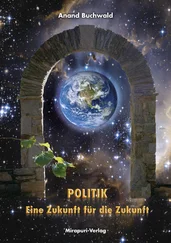The unique role of the Dalai Lama, who won the Nobel Peace Prize in 1989, is perhaps the major reason for Tibet's international exposure. His spiritual, nonviolent approach and frequent travels around the world not only generate much interest in Tibetan Buddhism but also serve to maintain attention to the status of Tibetans and Chinese practices in the region. (Gurr and Khosla 2001, 280-81)
That Sino-Tibetan conflict has come to revolve around the interpretation of the Dalai Lama as an individual is also evident from Bill Clinton's statement in Beijing: "I have spent time with the Dalai Lama, I believe him to be an honest man, and I believe that if he had a conversation with President Jiang Zemin, they would like each other very much" (World Tibet News 1998). On the other hand, critics like Rupert Murdoch support the Chinese occupation by attacking him: "I have heard cynics who say he's a very political old monk shuffling around in Gucci shoes… It [old Tibetan society] was a pretty terrible old autocratic society out of the Middle Ages" (World Tibet News 1999; emphasis added). These representations fail to convey through their imagery a sense of the process by which the Dalai Lama has come to represent his constituency or that the Tibet he represents is a "political Tibet with a defined territory and customs, or a highly complex society in transition with a wide range of sectors and interests, and a rapidly changing social environment" (Barnett 2001, 300-301). Without denying the cen-trality of the figure of the Dalai Lama to the Tibetan civilization, it can be argued that the current literalization of the Dalai Lama as Tibet is intimately linked to the Western imagination and Western desires. Another facet of this imagination is Tibet as the "rooftop of the world," allowing for a once-in-a-lifetime temporal and spiritual journey by Westerners.
TEMPORAL AND SPIRITUAL JOURNEYING TO THE "ROOFTOP OF THE WORLD"
Adventure (see Fergusson 1911) and spirituality are integral parts of journeys into Tibet. Lhasa, "a centre where barbaric practices mingle with the most sublime and philosophic studies," attracted Western travelers for "nothing is too strange for anyone to expect in this hidden metropolis of nirvana" (unidentifiable newspaper article by Edward Arnold, in IOR: MSS EUR/F197/523 n.d.). Western travelogues highlight a sense of adventure, surprise, and an encounter with spirituality in travels into Tibet, particularly in journeys to Lhasa (see Hovell 1993). After examining the enchantment with Tibet in terms of its geographically and politically challenging location, I look at two works of travel writing and pick out elements of temporal and spiritual adventure (see Cocker 1992). Apart from stereotyping, the main representational strategies at work include gaze, naturalization, [40]spiritualization, self-affirmation, and self-criticism.
One factor that explains the magnetic power of Tibet is its extreme remoteness from the West, conjuring images of a land of cherished ideals or a wasteland. Tibet's geographical features constitute a uniquely "fantastic" landscape. "It has all the physical features of a true wonderland… No description can convey the least idea of the solemn majesty, the serene beauty, the awe- inspiring wild-ness, the entrancing charm of the finest Tibetan scenes" (David -Neel 1936, 262).
Throughout the nineteenth and twentieth centuries, the fact that they were "closed" to Europeans added to the mystery of Lhasa and
Tibet. The epithets "the Forbidden City" and the "forbidden land" merely served to enhance the desire of individual Western travelers to defy the authorities. Wellby, who wanted to go to Tibet to find out "what mysteries lay beneath the word UNEXPLORED with which alone our latest maps were enlightened" (1898, 72; emphasis in original) finally gave up when he realized that the only way to succeed "would have been to shoot the most determined of our obstructionists… Even if supposing we had shot some of them, it would have been a very hazardous step to have risked a serious scrimmage almost on our very frontier" (72; emphasis added).
The desire to explore the unknown as the main reason to travel to Tibet is nicely expressed in Deasy:
I had long entertained the desire to travel in some unknown country, and in the spring of 1896, when circumstances were favourable, the wish was transformed into a settled purpose. The vast extent of the territory marked "unexplored" on the map of Tibet, then recently published, at once attracted me, and it was to this inhospitable and almost inaccessible land that I resolved to proceed. (1901, 2)
The opening of Tibet did not follow the British invasion: travel to Lhasa was severely restricted both by the Lhasa authority and the British Indian government. The "forbidden" character of Tibet was etched even deeper in Western imagination when China occupied Tibet and long periods of effective and coercive isolation began. Though Tibet has been opened to travelers in limited numbers since the 1980s, severe travel restrictions remain. Dodging Chinese authorities and encounters with "real" Tibetans (as opposed to "Sinicized" Tibetans) have become a staple of much contemporary travel writing (see, for example, Abbots 1997; Berkin 2000; Kewley 1990; McCue 1999; Morpurgo 1998; Patterson 1990; Scholberg 1995; Wilby 1988).
David-Neel's My Journey to Lhasa
Alexandra David-Neel was the first Western woman to be granted an audience with the Dalai Lama in Kalimpong. [41]She was the first to enter Lhasa when she went with a Sikkimese lama (Yongden) whom she adopted as her son and later brought to live in France. She set off in the winter of 1923 disguised as a Tibetan pilgrim, maps hidden in her boots, revolver in her peasant dress; she outwitted officials and bandits, enduring days without food and nights without shelter. Her account of her journey to Lhasa is replete with various themes common to Exotica Tibet. Though it is a travel account, it is also a journey into spiritual realms. As Hopkirk writes in the introduction to a later edition of her book, "her explorations were of the Tibetan mind rather than of the terrain" (David-Neel 1991, xv).
The book, originally published in 1927, starts with her rationale for taking the adventurous but dangerous trip. The British prohibited her from traveling in the Himalayan region, [42]which increased her determination. Once, when she was stopped from proceeding into Tibet,
I took an oath that in spite of all obstacles I would reach Lhasa and show what the will of a woman could achieve! But I did not think only of avenging my own defeats. I wanted the right to exhort others to pull down the antiquated barriers which surround, in the center of Asia… if "heaven is the Lord's," the earth is the inheritance of man, and… consequently any honest traveller has the right to walk as he chooses, all over the globe which is his. (xxv)
Her criticisms are also directed against the central Tibetan authority based in Lhasa. It was a period when Tibetans had been successful in pushing out the Chinese army and controlled large parts of the ethnically Tibetan area. According to her, the Tibetans lost much in parting with China, for their "sham independence profits only a clique of court officials" (256).
David-Neel's exoticization is more about the Tibetan landscape and less about the Tibetan people. While she finds most Tibetans very superstitious, she admires the physical landscape: "But is not everything a fairy tale in this extraordinary country, even to the name it gives itself, that of Khang Yul, 'the land of snows'?" (277). She derives spirituality not from Tibetan religion but from the geographical and natural landscape. After living the life of a Tibetan mystic, she felt that natural edifices like mountains and valleys conveyed a mysterious message: "What I heard was the thousand-year old echo of thoughts which are re-thought over and over again in the East, and which, nowadays, appear to have fixed their stronghold in the majestic heights of Thibet" (24). She considered the fantastic to be an everyday occurrence in Tibet. Mystics and mysticism are ever present in her pages. Speaking of the mystics' retreat in parts of Tibet, she writes, "This world of the Thibetan mystics is a mystery in the mystery of Thibet, a strange wonder in a wonderful country" (198).
Читать дальше












